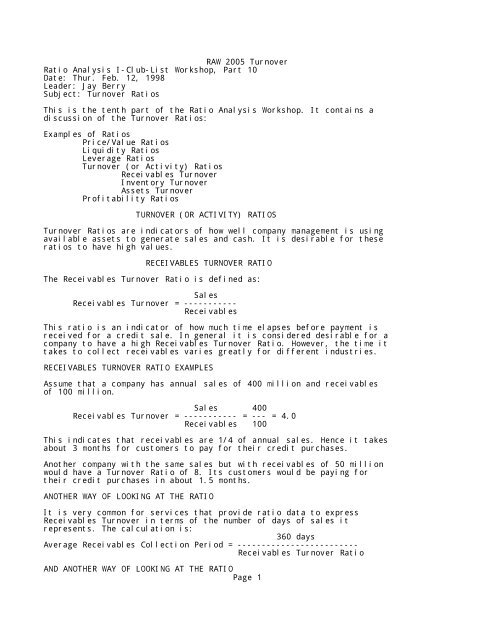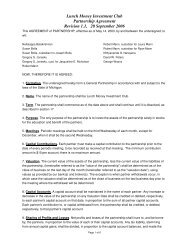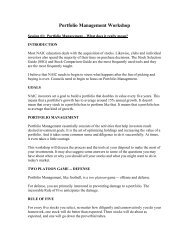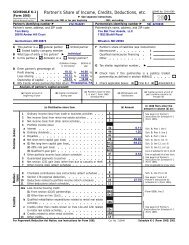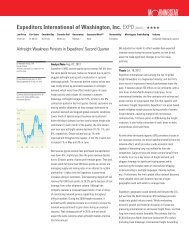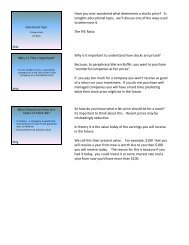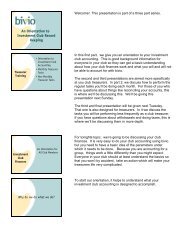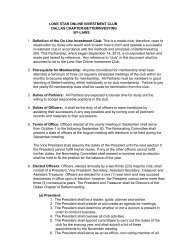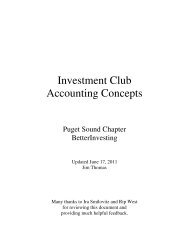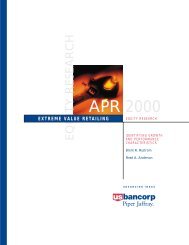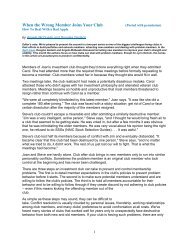Introduction Optional Reading Workshop Content - Bivio
Introduction Optional Reading Workshop Content - Bivio
Introduction Optional Reading Workshop Content - Bivio
You also want an ePaper? Increase the reach of your titles
YUMPU automatically turns print PDFs into web optimized ePapers that Google loves.
RAW 2005 TurnoverRatio Analysis I-Club-List <strong>Workshop</strong>, Part 10Date: Thur. Feb. 12, 1998Leader: Jay BerrySubject: Turnover RatiosThis is the tenth part of the Ratio Analysis <strong>Workshop</strong>. It contains adiscussion of the Turnover Ratios:Examples of RatiosPrice/Value RatiosLiquidity RatiosLeverage RatiosTurnover (or Activity) RatiosReceivables TurnoverInventory TurnoverAssets TurnoverProfitability RatiosTURNOVER (OR ACTIVITY) RATIOSTurnover Ratios are indicators of how well company management is usingavailable assets to generate sales and cash. It is desirable for theseratios to have high values.RECEIVABLES TURNOVER RATIOThe Receivables Turnover Ratio is defined as:SalesReceivables Turnover = -----------ReceivablesThis ratio is an indicator of how much time elapses before payment isreceived for a credit sale. In general it is considered desirable for acompany to have a high Receivables Turnover Ratio. However, the time ittakes to collect receivables varies greatly for different industries.RECEIVABLES TURNOVER RATIO EXAMPLESAssume that a company has annual sales of 400 million and receivablesof 100 million.Sales 400Receivables Turnover = ----------- = --- = 4.0Receivables 100This indicates that receivables are 1/4 of annual sales. Hence it takesabout 3 months for customers to pay for their credit purchases.Another company with the same sales but with receivables of 50 millionwould have a Turnover Ratio of 8. Its customers would be paying fortheir credit purchases in about 1.5 months.ANOTHER WAY OF LOOKING AT THE RATIOIt is very common for services that provide ratio data to expressReceivables Turnover in terms of the number of days of sales itrepresents. The calculation is:360 daysAverage Receivables Collection Period = -------------------------Receivables Turnover RatioAND ANOTHER WAY OF LOOKING AT THE RATIOPage 1


